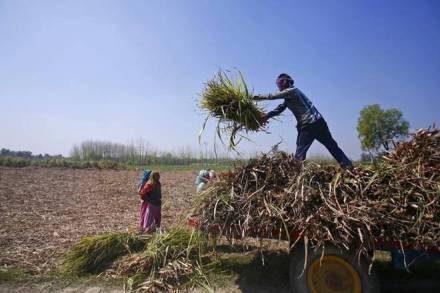The Prime Minister’s Office (PMO) will review on Monday the farm export policy floated by the commerce ministry, a source told FE. The draft export policy, which has been circulated for inter-ministerial consultations, has proposed to keep the outbound shipment of processed and organic items free of any restriction.
Senior commerce ministry officials will brief the PMO about various aspects of the export policy and its intent on which the ministry has moved the cabinet note, said the source.
Delivering his Independence Day speech, Prime Minister Narendra Modi had announced that the new agriculture export policy will be unveiled soon to boost farm income.
The policy is aimed at doubling the country’s farm exports to over $60 billion by 2022.
Once the Cabinet endorses this proposal, the commerce ministry is expected to start consultations with the ministries of agriculture, food and consumer affairs to gather consensus on a policy to limit export curbs to only a very few farm items, such as rice and wheat, that are crucial to the country’s food security, and not all the dozen-odd items that are considered essential commodities. This means the scope for periodic curbs on exports of politically-sensitive onion or pulses, cotton and sugar that the government has resorted to in the past will be ended if there is a consensus. These curbs include the imposition of minimum export price, export duty and an outright ban on exports.
However, analysts have argued that to best tap India’s farm export potential, the outbound shipment should be kept free all the time. This is all the more important when the government has announced a 50% premium to farmers over their cost of production, which threatens to inflate domestic prices of several commodities and hurt exports. A predictable export regime will provide some cushion in that case.
In March, the commerce ministry had released the first draft farm export policy, seeking a stable trade policy regime with limited government interference for key farm items. Reforms in the APMC Act, streamlining of mandi fee and liberalisation of land leasing norms are among the raft of measures suggested in the draft policy.
India had imposed a ban on exports of wheat in 2007 and on non-basmati rice in 2008. The government has resorted to impose curbs on onion exports almost every year and periodically slapped restriction on cotton and sugar exports as well. An export ban on key pulses and oilseeds was in effect for a long time. However, in recent years, the fluctuations in farm trade policy have reduced considerably.
After hitting a record $42.6 billion in 2013-14, partly aided by elevated global commodity prices, farm exports have declined to $32 billion in 2015-16 and $33 billion 2016-17, and the net trade surplus, too, declined to $9.5 billion in 2015-16 and $7.8 billion in 2016-17.
India’s farm exports reversed a three-year slide and posted an over 14% rise to $38.2 billion in the last fiscal from a year earlier on robust demand for marine products and rice. What bolsters the notion of a recovery in farm export is the fact that, in volume terms, as many as 27 of the top 40 items that make up around 95% of total agricultural shipments registered a rise in 2017-18. In fact, export volumes of six of the top 10 items accounting for around 70% of agricultural and allied product shipment rose in the last fiscal, vis-a-vis 2013-14. “This suggests our farm and allied sector exports in the last fiscal could have breached the earlier record if key commodity prices in the export market would not have remained subdued last fiscal,” a senior commerce ministry official had told FE earlier. The rise in the outbound shipments of farm items exceeded a 10% expansion in the overall merchandise exports in 2017-18.
Elaborating on the stable trade policy regime, the policy said given the domestic price and production volatility of certain agricultural commodities, there has been a tendency to utilise the policy as an instrument to attain short-term goals of taming inflation, providing price support to farmers and protecting the domestic industry. Such decisions may serve the immediate purpose of maintaining domestic price equilibrium, but they end up distorting India’s image in international trade as a long-term and reliable supplier, it said.
